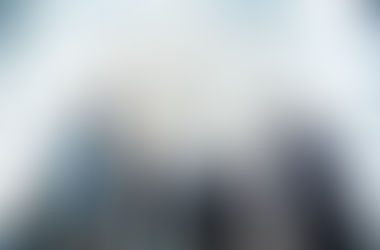Jean Rouch- The Man Who Transformed the Cinematographic Art
- Rishikesh Bhattacharya
- Jan 7, 2017
- 4 min read
This year the world of Cinema celebrates hundredth anniversary of birth of Cinematographer and Anthropologist, Jean Rouch. The UNESCO has commemorated this including his birth anniversary in its list of anniversaries, this year.

Bobby Unser, an American car racer once said, “Desire! That’s the one secret of every man’s career. Not education. Not being born with hidden talents. Desire.” Rouch’s endeavour in the arena of cinematography is synonymous with this quote. He began his long association with African subjects in 1941 after working as civil engineer supervising a construction project in Niger. During his work in Niger Jean Rouch came to experience the rituals and ceremonies of the Songhay; the people living near the Niger River, in the eastern Mali, western Niger, and northern Benin. He documented the events and sent his work to his teacher Marcel Griaule, who encouraged Rouch to continue his work with the Songhay and go even deeper into his studies. He along with two of his friends sent photographs back to Paris, and made a 16mm film on Hippopotamus hunt that some of their African friends were involved in.

However, shortly afterwards he returned to France to participate in the Resistance. After the war, he did a brief stint as a journalist with Agence France-Presse before returning to Africa where he became an influential anthropologist and sometimes controversial filmmaker. Jean Rouch is generally considered the father of Nigerien cinema. Despite arriving as a colonialist in 1941, Rouch remained in Niger after independence, and mentored a generation of Nigerien filmmakers and actors, including Damouré Zika and Oumarou Ganda.

He is considered to be one of the founders of cinéma-vérité (French for, “Truthful Cinema”) in France, which is a style of documentary film-making. It shared the aesthetics of the direct cinema spearheaded by Richard Leacock, D.A. Pennebaker and Albert and David Maysles.
Rouch's practice as a filmmaker for over sixty years in Africa was characterized by the idea of shared anthropology. Influenced by his discovery of surrealism in his early twenties, many of his films blur the line between fiction and documentary, creating a new style of ethno-fiction. Surrealism is a cultural movement that emerged in France, which aimed at “resolving the previously contradictory conditions of dream and reality.” He was also hailed by the French New Wave as one of theirs. His seminal film Me a Black (Moi, un noir) pioneered the technique of jump cut popularized by Jean-Luc Godard. Godard said of Rouch in the Cahiers du Cinéma (French for, “Notebooks on Cinema”) ; which is a noted magazine on French film-industry, in its April 1959 edition, "In charge of research for the Musée de l'Homme (French for, "Museum of Man") is there a better definition for a filmmaker?"
Some of his most noted works are Initiation à la danse des possédés (French for,”Initiation into Possession Dance”)-1949, Les maîtres fous (French for, “The Mad Masters”)-1955, and La chasse au lion à l'arc (French for,” The Lion Hunters”)-1967. Many of his films were source of political controversy and had to be banned in few African countries after their release.
“The Mad Masters” is about a ceremony performed for the camera by the Hauka, a religious sect that was widespread in West Africa from the 1920s to the 1950s. There were at least 30,000 practicing in the Ghaniain city of Accra in 1954 when Jean Rouch was asked by a small group to film their annual ceremony. During the ritual, which took place on a remote site, a few hours drive from the city, the Hauka went into a trance and become possessed with the spirits of their colonial masters, imitating and mocking their behaviour in a grotesque manner. They are also shown speaking in tongues, frothing at the mouth, handling fire, reaching into boiling water without being burned, and eating a dog. The effect is both fascinating and unsettling. Indeed, the colonial authorities were perturbed enough by the scenes portrayed that they banned the film in 1955 and it remains controversial to this day.
He is considered as one of the pioneers of Nouvelle Vague, of visual anthropology and the father of ethno-fiction. Rouch's films mostly belonged to the cinéma-vérité school – a term that Edgar Morin used in a 1960 France-Observateur article referring to Dziga Vertov's Kinopravda. His best known film, one of the central works of the Nouvelle Vague, is Chronique d'un été (1961) which he filmed with sociologist Edgar Morin and in which he portrays the social life of contemporary France. Throughout his career, he used his camera to report on life in Africa. Over the course of five decades, he made almost 120 films.
Awards: Prize Festival du Film Maudit, Biarritz, for Initiation à la danse, 1949; Prix du Reportage, Paris Short Film Festival, for Circoncision, 1950; Critics Prize, Venice Film Festival, for Les Maîtres fous, 1955; Prix Delluc, for Moi, un Noir, 1959; Prizes at Cannes, Manheim, and Venice Festivals for Chronique d'un été,1961;Golden Lion Prize, Venice, for La-Chasse-au-lion,1965. With Jean-Michel Arnold he founded the international documentary film festival, the Cinéma du Réel at the Pompidou Centre in Paris in 1978.
He died in a car accident in February 2004, 16 kilometres from the town of Birni-N'Konni, Niger.
Sources:
UNESCO Anniversaries-2017
Wikipedia- Jean Rouch
DER- Jean Rouch Filmmaker Anthropologist























Comments